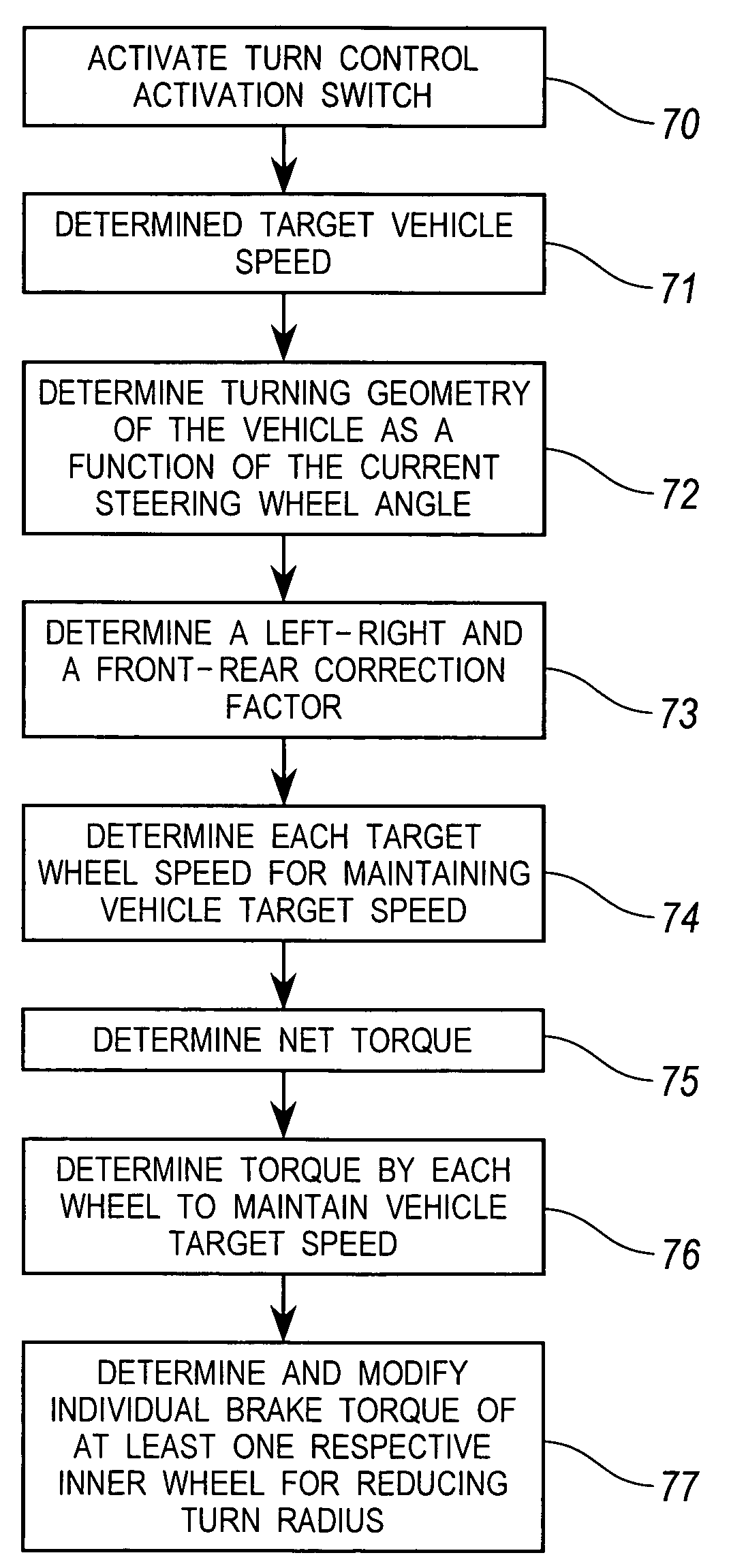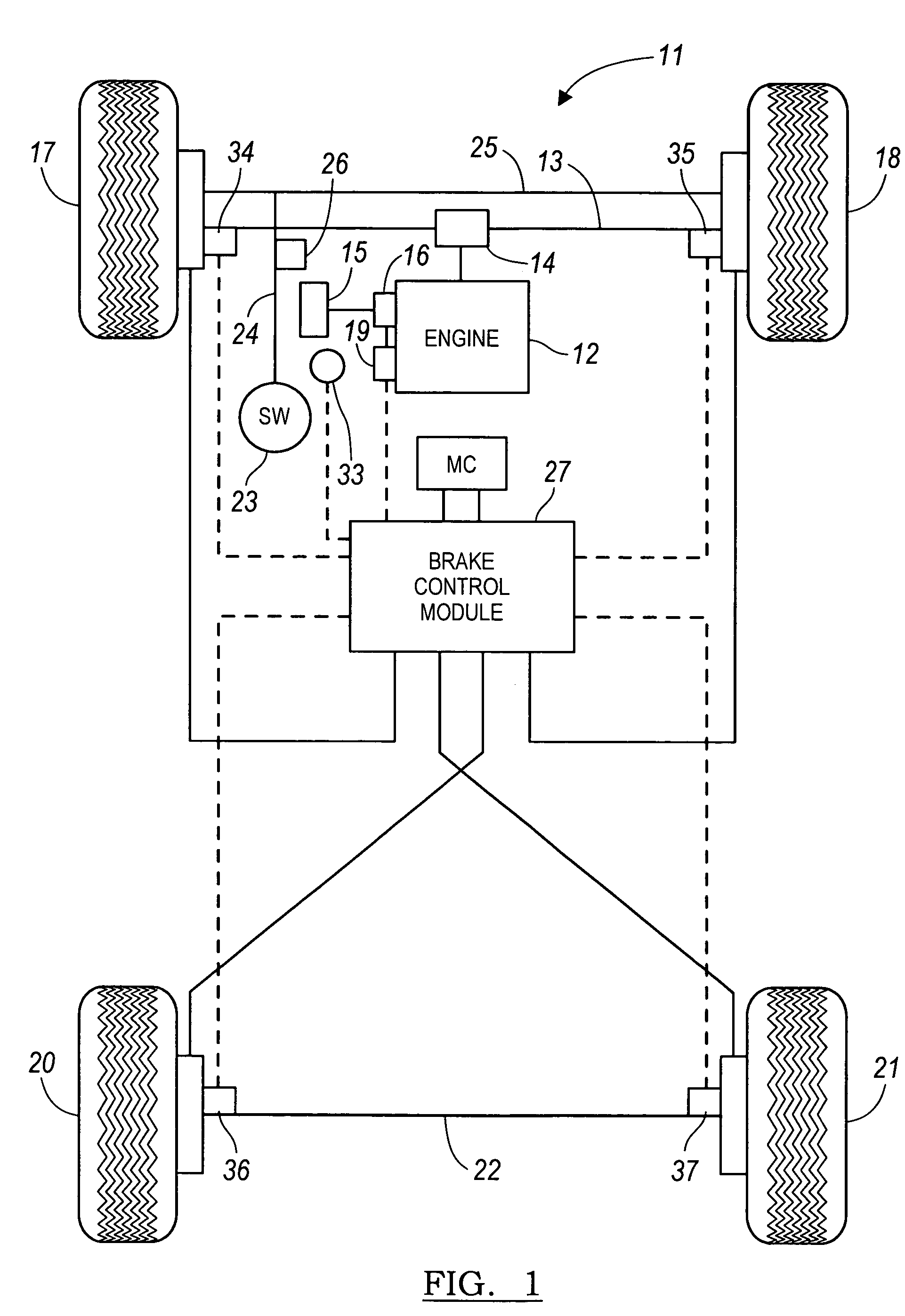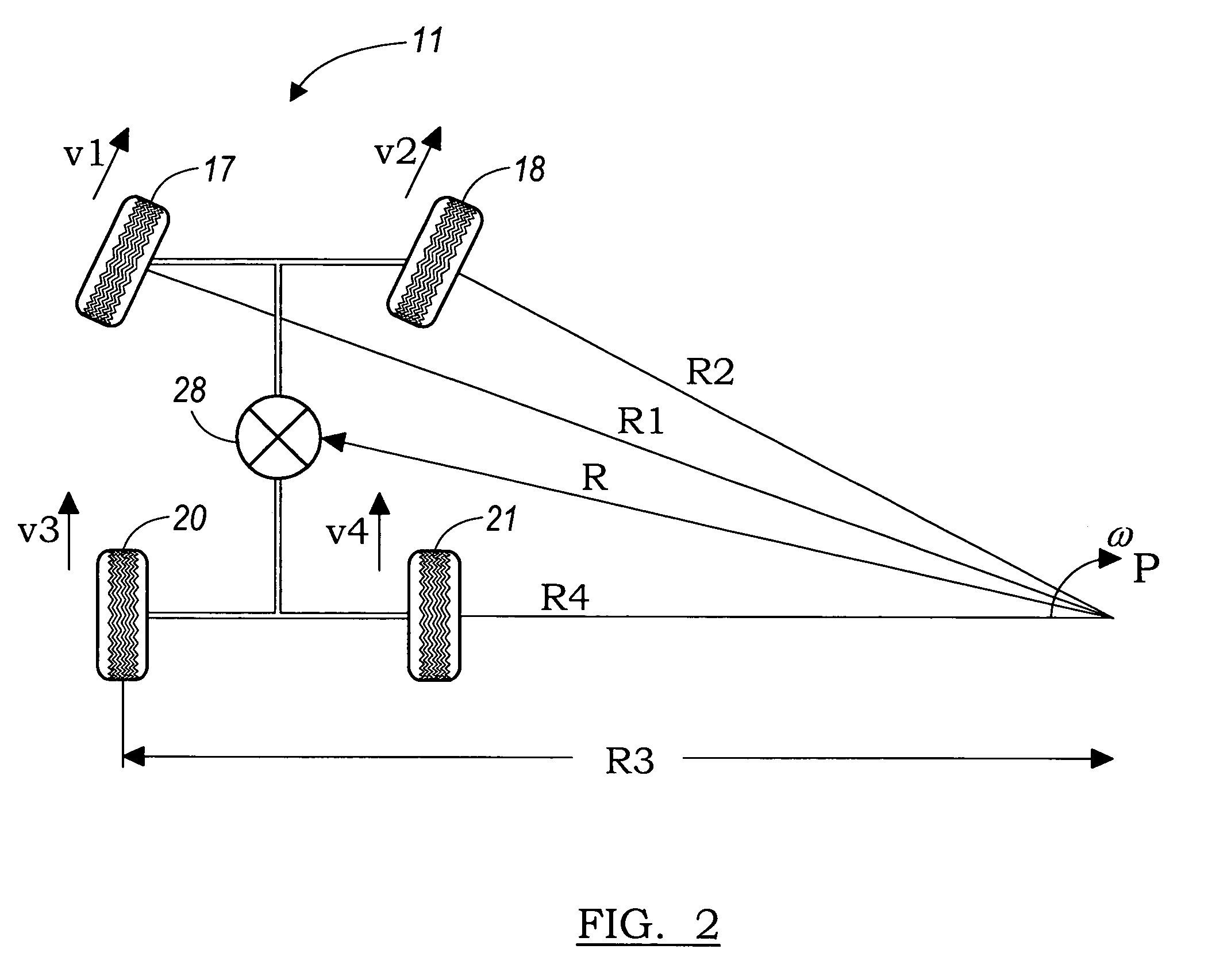Steer by brake control system
a technology of brake control system and steering wheel, which is applied in the direction of steering initiation, instruments, vessel construction, etc., can solve the problems of difficult to establish or predict the turning radius, costly four-wheel steering system, etc., and achieve the effect of constant reduction of the turn radius of the vehicl
- Summary
- Abstract
- Description
- Claims
- Application Information
AI Technical Summary
Benefits of technology
Problems solved by technology
Method used
Image
Examples
third embodiment
[0028]For an all wheel drive system (such as for the third embodiment, as illustrated infra in FIG. 7) making a left turn utilizing SBB and CSC controls, the torque exerted on the each of the vehicle wheels are represented by the following formula:
[0029]T1=lim(0,x,Tmax),wherex=Tbrk_CSC-Tbrk_SBB4,(10)T2=lim(0,y,Tmax),wherey=T1+Tbrk_SBB2,(11)
T3=T1, (12)
T4=T2, (13)
where T1 is a brake torque request on an outside front wheel, where T2 is a brake torque request on an inside front wheel, where T3 is a brake torque request on an outside rear wheel, where T4 is a brake torque request on an inside rear wheel, where Tmax a maximum braking torque achievable on each vehicle wheel, where Tbrk—SBB is an available braking torque for a respective steering wheel angle, and where Tbrk—CSC is a total braking torque for maintaining a constant target vehicle speed.
[0030]FIG. 4 illustrates a graph for a respective vehicle for applying a braking torque Tbrk—SBB to a respective inner wheel of a v...
second embodiment
[0033]FIG. 6 illustrates a diagram showing the turning geometry for a rear wheel drive vehicle 31 according to the present invention. As discussed above, the vehicle 11 has a turn radius R about a center point P for a particular steering wheel angle θSWA without special brake force applied, this geometry that generates a TCP 39. An additional braking torque is applied to the front inside wheel 21 as the vehicle travels at a vehicle target velocity vT while at a particular steering wheel angle θSWA. The amount of additional braking torque applied is a function of the vehicle target velocity vT and the steering wheel angle θSWA. This additional braking torque applied to the rear inside wheel 21 will cause the vehicle to change from an initial turn radius R changes to a brake assisted turn radius R′ with a corresponding change in the center turning point from the initial turning center point P to brake assisted turn radius point P′. The turning radius of the vehicle 31 is reduced, even...
PUM
 Login to View More
Login to View More Abstract
Description
Claims
Application Information
 Login to View More
Login to View More - R&D
- Intellectual Property
- Life Sciences
- Materials
- Tech Scout
- Unparalleled Data Quality
- Higher Quality Content
- 60% Fewer Hallucinations
Browse by: Latest US Patents, China's latest patents, Technical Efficacy Thesaurus, Application Domain, Technology Topic, Popular Technical Reports.
© 2025 PatSnap. All rights reserved.Legal|Privacy policy|Modern Slavery Act Transparency Statement|Sitemap|About US| Contact US: help@patsnap.com



